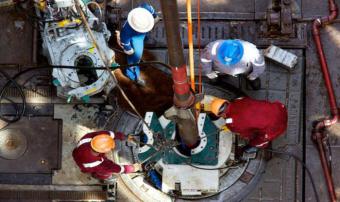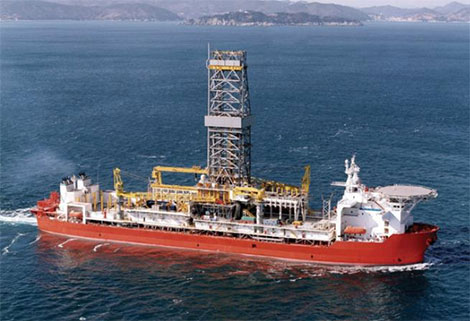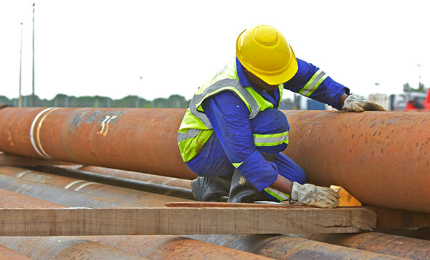Mozambique LNG, Palma, Cabo Delgado
Mozambique Liquefied Natural Gas (LNG) Park is proposed to be constructed in the Afungi peninsula area, in Cabo Delgaro Province, Northern Mozambique, constituting the onshore element of the larger Mozambique Gas Development Project. The first LNG sale from the project is scheduled for 2018.
The proposed LNG park will process natural gas sourced from Anadarko’s Offshore Area 1and Eni’s Area 4 located in the deepwater Rovuma Basin. Anadarko and Eni signed a Heads of Agreement (HoA) in 2012 for joint development of the LNG park, while pursuing their offshore development activities separately.
The larger project is estimated to generate approximately 15,000 direct jobs and 685,000 indirect jobs. It will add $39bn a year to the Mozambican economy.
With a maximum capacity of 50 million tonnes a year, the project is expected to propel Mozambique to become the third biggest natural gas exporter, after Qatar and Australia.
Offshore Areas 1 and 4
Anadarko operates the Offshore Area 1 with a 26.5% working interest in partnership with Mitsui (20%), Empresa Nacional de Hidrocarbonetos (ENH) (15%), ONGC Videsh (16%), Bharat PetroResources (10%), PTT Exploration & Production (8.5%), and Oil India (4%).
Spanning 2.6 million acre, the offshore Area 1 has estimated reserves of more than 75Tcf and contains six gas fields, namely Windjammer, Barquentine, Lagosta, Camarão, Golfinho and Atum, which are located in water depths of approximately 5,000ft.
Eni holds a 70% stake in the offshore Area 4 in partnership with Galp Energia (10 %), Korea Gas (Kogas) (10 %) and ENH (10 %).
The Eni-operated Area 4 has potential gas reserves of approximately 75Tcf and contains the Mamba and Coral gas fields, covering an area of approximately 1,100km².
Design details of the LNG park
The proposed LNG park will be constructed on 7,000ha land, which is also known as the Afungi project site. Natural gas produced from the subsea reservoirs will be transported to the LNG facility through a proposed 45km pipeline that will pass through the islands of Rongui and Tecomaji and connect to the north eastern coastline of Afungi peninsula.
Construction of the LNG Park will be carried out in phases. The first phase will involve the installation of two LNG trains, each with capacity of six million tonnes a year. Four more trains of the same capacity will also be added as the gas production increases.
Two storage tanks with a capacity of 180,000m3, condensate storage facilities and a multi-berth marine jetty will be installed. Two LNG export jetties will receive the LNG from the storage tanks through insulated pipes. The LNG will then be loaded into vessels and exported to international markets, mainly in Asia.
The LNG Park will be equipped with ancillary facilities, such as a flare system, temporary and permanent accommodation, fuel gas system, power generation and distribution system, water desalination plant, water wells and water treatment plants, as well as sewage and waste treatment facilities, and communication infrastructure.
Transport infrastructure
A heavy-haul road will be developed to transport construction materials and equipment to the project site. The proposed road will have a length between three and five kilometres and width between 12m and 16m.
An airport with a 3.5km runway is also proposed to be developed at the site. It will accommodate commercial jet airliners and heavy transport aircraft and will include a control tower, terminal, administrative buildings, hangers, refuelling areas, and access roads connecting the airport to the LNG facility.
Contractors involved with Mozambique LNG Park
KBR was awarded a contract for carrying out pre-front-end-engineering and design (pre-FEED) study for the LNG park in 2011. Multiple FEED contracts were awarded in 2012 and 2013.
The consortium of Chiyoda Corporation and Chicago Bridge & Iron Company (CB&I) was awarded the FEED contract for the project in December 2012. The FEED contract to Bechtel was awarded in January 2013, while the joint venture of Fluor and JGC Corporation was also contracted for the FEED process that same month.
Based on the results of the FEED studies, the consortium of CB&I and Chiyoda Corporation, joined by Saipem, was selected in May 2015 for the initial development of the project.
Read on: www.hydrocarbons-technology.com

Mozambique Oil & Gas: ENI’s floating factory environmentally viable
 The project to build a floating plant to process natural gas in the Area 4 block, in northern Mozambique, is feasible in environmental terms provided the proposed measures are implemented, according to a preliminary report. The study, prepared by Consultec, is part of the process of evaluating the environmental impact of the project started in 2013 and which is now in its second phase, before delivery for assessment by the government fin order to award an environmental license.
The project to build a floating plant to process natural gas in the Area 4 block, in northern Mozambique, is feasible in environmental terms provided the proposed measures are implemented, according to a preliminary report. The study, prepared by Consultec, is part of the process of evaluating the environmental impact of the project started in 2013 and which is now in its second phase, before delivery for assessment by the government fin order to award an environmental license.
The construction of the floating factory is intended for initial exploration of natural gas in the area, where Italian oil company ENI East Africa discovered significant gas reserves, estimated to contain over 85 trillion cubic feet of natural gas.
Area 4 of the Rovuma Basin is located approximately 250 kilometres northeast of the city of Pemba, with its western boundary over 50 kilometres from the coast of Cabo Delgado province.
Cited by Mozambican newspaper Notícias, the Consultec technician who presented the study, Emanuel Viçoso said it was likely that the project proposed by ENI would have residual negative and positive impacts on the environment, although few positive impacts are expected due its location out at sea.
The environmental impact study, he said, had identified more than 80 positive and negative impacts in total from drilling, installation, commissioning and decommissioning mainly, directly or indirectly, related to the increase in maritime traffic in the region, with resulting effects associated to an increase in noise and lighting on people and marine wildlife.
The study also said, however, that the vast majority of the ENI Group’s project impacts were classified as being of low or medium significance after mitigation, i.e. taking into account the implementation of proposed measures. (macauhub/MZ)
Read on mozambiqueminingpost.wordpress.com

Anadarko Petroleum moves ahead
US group Anadarko Petroleum will start prospecting for oil and gas in the Kifaru.1 well, located in the Rovuma onshore concession in northern Mozambique, according to Wentworth Resources, one of the partner companies in the consortium.
The presence of sands from the Miocene period, as well as the Oligocene and Cretaceous, will be the focus of research in Kifaru-1 well, which will be about 4,050 metres deep, if prospecting continues for at least 70 days.
According to Wenthworth Resources, which owns an 11.59 percent stake in onshore Rovuma concession, led by Anadarko (35.70 percent), which is listed on the alternative investment market of the London Stock Exchange, as well as in Oslo, the search will look for evidence of the presence of hydrocarbons similar to those found in the r natural gas fields of Msimbati and Mnazi Bay in southern Tanzania.
In the latter, whose concession is led by France’s Maurel & Prom, which has a 27.71-percent share in Anadarko’s concession, Wenthworth Resources has a 31.94 percent stake. According to the company the first natural gas extraction activities, which will be processed in Dar es Salaam, after transport through a pipeline that was funded by the Export-Import Bank of China (China Exim Bank) and developed by China National Petroleum Corporation, are expected by April.
The Kifaru-1 well, located in the north of the Mozambican province of Cabo Delgado, will be the fourth to be analysed by the consortium’s research teams.
According to Wenthworth Resources, all four previous prospecting areas found evidence of hydrocarbons, such as oil and gas in Mocímboa-1. However, their exploration by the consortium, which is also owned by Mozambican state oil ad gas company ENH with 15 percent, and Thailand’s PTT Exploration in Production (PPTEP), with 10 percent.
In addition to this concession, Anadarko Petroleum (26.5 percent) leads the Area-1 consortium, off the coast of Cabo Delgado province, which includes ENH (15 percent), India’s ONGC Videsh (20 percent) and BRPL Ventures (10 percent), Japan’s Mitsui & Co (20%) and Thailand’s PTT Exploration and Production (8.5 percent), where reserves of 50 to 70 trillion cubic feet of natural gas have been found.
In its initial phase, the plans for this project will require the construction of two natural gas liquefaction units in the Afungi Peninsula, Palma district, involving a collaboration with neighbouring consortium led by Italy’s ENI, in Area-4, since the two grants share a natural gas reservoir: Mamba (Area-4) and Prosperidade (Area-1).
The development of these two units may involve investments of about US$16 billion, and its commissioning scheduled for 2018, according to the most optimistic estimates of local authorities. (macauhub/MZ).
Read on http://www.macauhub.com.mo

